Let's Talk Backpacks
From trail runners, to day packs, to multi-day packs, and of course the packable day packs.
Let's talk Backpacks!
This will and always has been one of my favorite topics. Finding the right backpack can be an incredibly stressful and daunting experience. So many things to know when looking for the right one for yourself. Below I will share with you my most current backpacks I own and use. Each all having their own purpose and season. I know, I know, you're probably saying "does that mean I need more than one?"
Well, yes. Sometimes that is exactly what that means. But not always.
First, let's start with the different types of backpacks. I have broken them into categories for you.
(These are my own descriptions)
Trail Runners/Hydration Packs (8-15L)
Day Packs (20-30L)
Day Packs (20-30L)
Winter Packs (30-50L)
Overnight Packs (40-70L)
Let's start with the smallest pack you can purchase. The Trail Runners/Hydration Packs. These packs you will typically find anywhere from 8L-15L. They are very compact, typically can hold a 2L hydration bladder, and possible an addition water flask or 2. Trail running packs typically fit similar to a vest, fairly snug around the upper chest area and often time, do not give the full back support a daypack would give you. We will get more into that in the Day Pack section of this post.
Understandably many hikers who have never used or owned a trail running pack/vest find it couldn't be possible to fit all of your essentials in that "tiny pack". That would be correct if you are using the lower end Liters such as an 8L- However, I have found in my experience, in order to feel safe and comfortable in the White Mountains of New Hampshire I can not have anything smaller than a 12L. I just simply would not have my essential items necessary to spend hours let alone a night in the mountains if I did.
These packs are oddly very comfortable for the amount of weight you carry. They are great for long and fast days in the mountains. This would be considered a "light & fast". As a trail runner you are as good as your balance in the mountains. Balance doesn't always come easily with lots of weight on your back shifting from one side to the next. This is where a trailrunner is best used.
MY GEAR REVIEW:
Ultimate Direction Mountain Vest 4.0
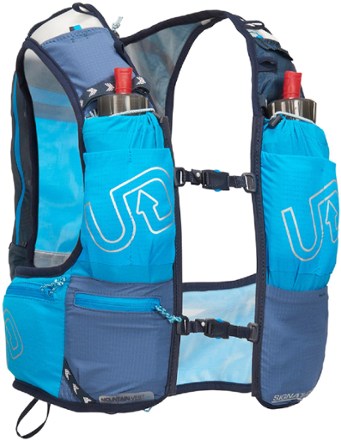
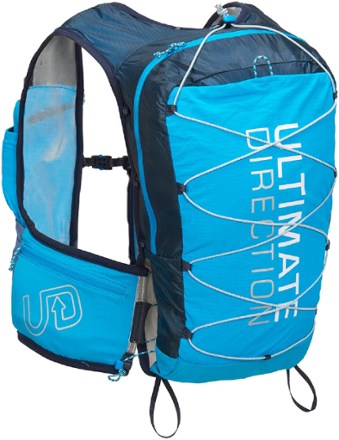
This is the vest I currently trail run in. I have fallen in absolute love with all Ultimate Direction products. This pack is a 13L pack and is perfect for what I can stash in it on a long day or a short day. With 13 L, I can easily fit up to 3 warmer layers, hat, gloves, 3L of water, lots and lots of snacks, first aid, 2 headlamps, my keys, wallet, phone and the rest of the 10 essential items. It's comfortable, fits snug, and the pocket system is spot on for grabbing a bite on the go.
Now, say you haven't quite gotten your system down to be comfortable enough to bring ONLY the items you will use, and you want to still carry a few additional items just in case. Then day packs are usually the way to go. This is usually where most will start. Day packs are typically 20-30L in size.
Day packs are great for your first attempt on a really long day, if you adventure with you pups, or if you just like to air on the side of caution for your first few times out on trail. Maybe you also have a back injury and need better support, another great option is the day back. Most you will find have great support systems.
MY GEAR REVIEW:
Osprey Tempest 20 Women's
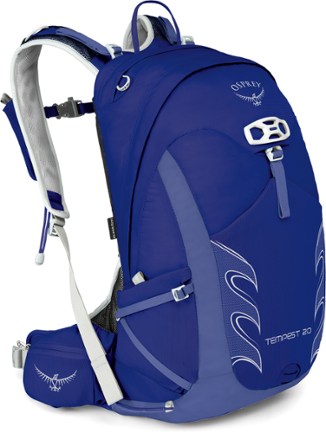

Since I used my first ever Osprey Tempest, I have never gone back! This pack is incredibly comfortable. The weight sits perfect on your hips, where it belongs, the torso is adjustable to fit the needs of your torso length, and is so incredibly light! I can not say enough about this pack. It is by far my go to adventure pack in the summer months and shoulder seasons! Coming in at only 1lb, 10oz.
So you've enjoyed yourself hitting all the peaks in the summer months, and a friend has peaked your interest with trying out some of those higher peaks in the Winter. Your day pack certainly could tie you over for your first time or two. However, the extra space for the extra give is always nice. the last thing anyone wants is to be cold, or not have enough water, or not enough snacks in the winter months.
Winter can also be tough because there is more gear to carry that has some weight to it. Often times you wear microspikes and have to carry your snowshoes on your pack, so having some adjustment straps to hook them too helps. Also, you don't want your snowshoes to be bigger than what your carrying. Other times, you're carrying all of it on your back do to spring like conditions at the bottom, but full winter on top. It's always a bonus to carry a thermos with something warm to eat/drink when stopped.
This is when I would recommend moving to a little bit larger of a pack. Somewhere between a 30-50L pack would be more than enough for just a days adventure.
MY GEAR REVIEW:
Osprey Kyte 36 Women's

Okay, I know! I LOVE Osprey. As a female in the outdoors it is so incredibly difficult to find things that fit to my body specifically. Osprey is one of those companies who does a FINE job at making sure they can cater to a female specific body type. My Kyte, is my winter pack for longer and much colder day hikes in the White Mountains. I also in summer months have been able to use this as a 1night overnight pack for myself & my dog. It is 36L, and the pocket system again is perfect. The mesh side pockets for Nalgenes makes getting your water and putting it back pain free. There is also a small zippered section on the bottom allowing me access to my pack from a different side other than the top for items. There is also 2 side straps located on each side where I can easily attach my snowshoes, trekking pole attachment, and an axe attachment. FOR THE WIN!

Okay, I know! I LOVE Osprey. As a female in the outdoors it is so incredibly difficult to find things that fit to my body specifically. Osprey is one of those companies who does a FINE job at making sure they can cater to a female specific body type. My Kyte, is my winter pack for longer and much colder day hikes in the White Mountains. I also in summer months have been able to use this as a 1night overnight pack for myself & my dog. It is 36L, and the pocket system again is perfect. The mesh side pockets for Nalgenes makes getting your water and putting it back pain free. There is also a small zippered section on the bottom allowing me access to my pack from a different side other than the top for items. There is also 2 side straps located on each side where I can easily attach my snowshoes, trekking pole attachment, and an axe attachment. FOR THE WIN!
Alright! Last but certainly not least is the overnight packs or multi-day packs. This one is the hardest of them all, mostly because you typically would be carrying the weight of the world on your shoulders- or so it seems. Technically the weight should never rest on your shoulders if your pack fits properly. More to come on that.
So you're thinking of potentially trying an overnight, or a thru-hike, you will obviously need more space to carry a few days worth of gear, food and water. These packs can range 50-70L+.
I recently just sold my Osprey Xena 70 to try out the Deuters. I have heard such incredible things about Deuter and their women specific packs. So I figured I would give it a try as I just wasn't loving my Osprey Xena anymore.
One downfall to the Osprey was the hip belt, even after having it molded to my hips, it still bruised my hip bones every time I used it. Otherwise, comfortable and the set up and design was perfect. The only other thing was it weighed over 5lbs, which in reality was a lot. So, I decided it was time to step out of my comfort zone and try something new.
MY GEAR REVIEW:
MY GEAR REVIEW:
Deuter Aircontact Lite 50 +10L

Okay, one additional item that I have found extremely useful (if you don't mind the extra weight while backpacking) is the packable day pack! Some overnight packs will come with a detachable top pouch you can then wear as a fanny pack. But if yours does not have that option here is your next option.
MY GEAR REVIEW:
Sea to Summit Ultra-Sil Day Pack
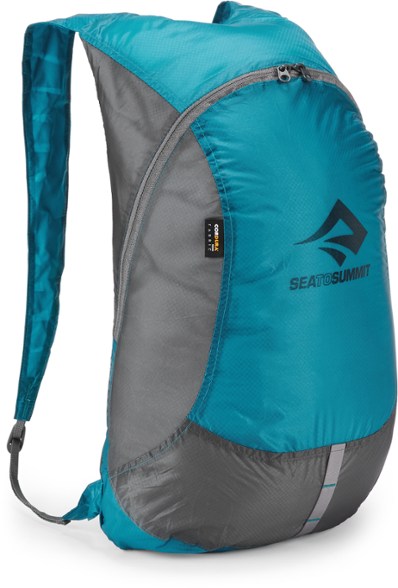
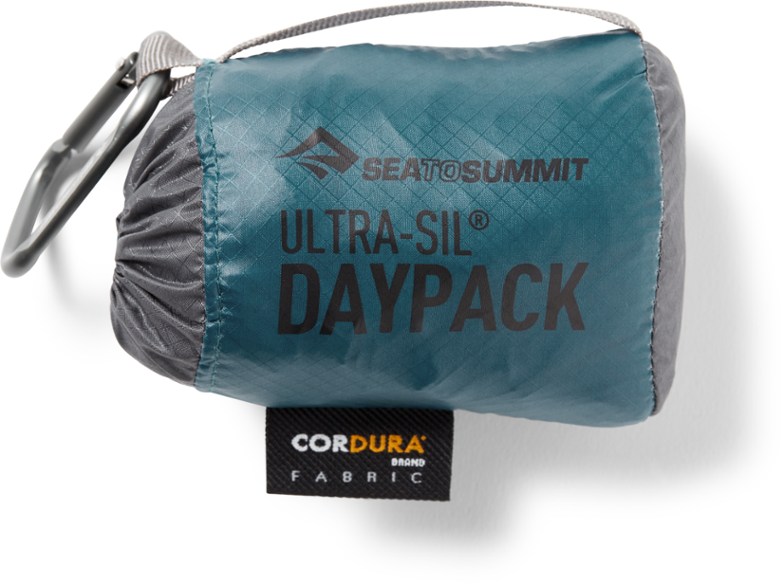
MY GEAR REVIEW:
Sea to Summit Ultra-Sil Day Pack


HOW TO SIZE & FIT FOR A BACKPACK
With all of the information I have shared on backpacks and the ones I use and love. The most important take away will always be that you find the one that fit you well. You want to feel the best you can when adventuring in the back-country. So here is a great guide to teaching you how to properly size at home.
https://www.rei.com/learn/expert-advice/backpacks-adjusting-fit.html
If you are someone who would rather touch and feel and try them on head into your nearest REI, EMS, or any other outdoor store to have them size you appropriately! Just ask a sales associate, they will happily help you find the best one.
https://www.rei.com/learn/expert-advice/backpacks-adjusting-fit.html
If you are someone who would rather touch and feel and try them on head into your nearest REI, EMS, or any other outdoor store to have them size you appropriately! Just ask a sales associate, they will happily help you find the best one.




Comments
Post a Comment